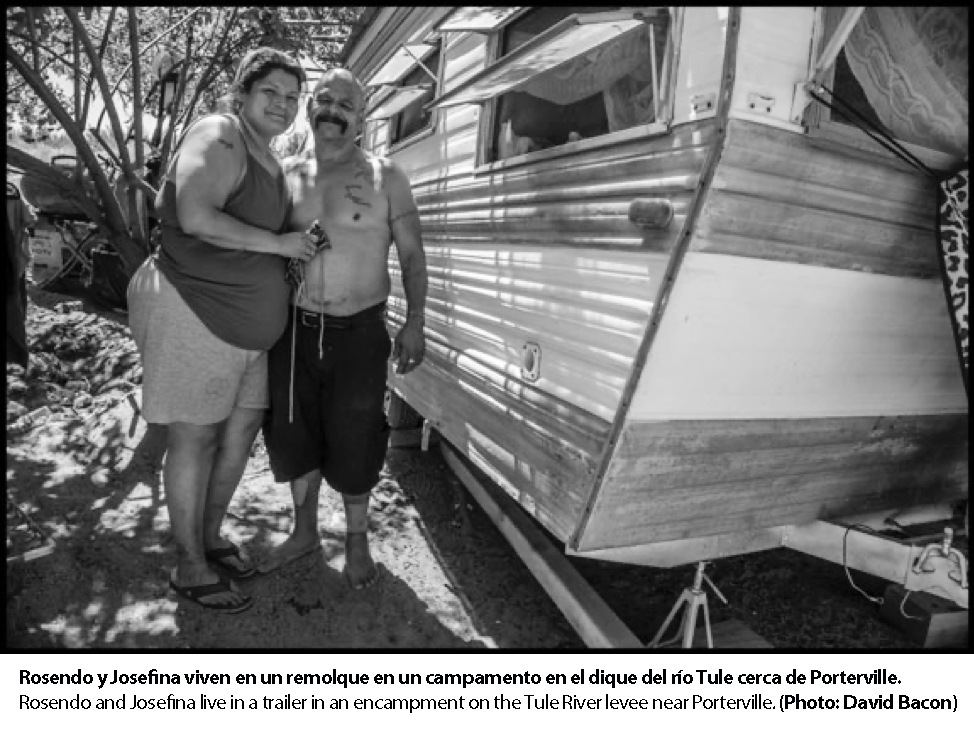by Araceli Martínez
– Sponsored content from JPMorgan Chase & Co.
Mónica Martínez never thought that what started as a small farm design project to raise edible insects in home kitchens would grow into ‘Don Bugito’, a fast growing business in the San Francisco Bay area.
Don Bugito specializes in preparing snacks made from crickets and mealworms, inspired by pre-Columbian Mexican cuisine.
In January, Don Bugito got a strong boost when ICA, an Oakland-based nonprofit venture capital fund, invested $200,000 in equity to make it grow and expand.
Don Bugito’s story began approximately 10 years ago, when Mónica, who had come to Boston to study industrial design, never imagined becoming a business owner, an opportunity that she had not sought.
“I wanted to introduce edible insects to the food market. I featured the project to raise mealworms at a gallery in New York that appeared on the cover of the food section of the New York Times, and I haven’t stopped since. I had a lot of press and a television station that does food shows came to my house and they filmed me while I was cooking.”
And when she was asked what she was going to do next, she replied that she would open a food truck. “But I didn’t even have the capital for this. So, I became an edible insects taco street vendor for four years or more.”
Mónica believes that she was very fortunate because in 2013, the Food and Agriculture Organization of the United Nations launched a publication that spoke of the importance of Western countries starting to include insects in their diet.
“It was then that people started buying their products. But she wasn’t making a lot of money. She worked from 5 a.m. until midnight. She was making $100 a day or less and had a baby.”
She says it was in 2014 when she pivoted the company to become an edible insects snack company.
Mónica brought her passion for consuming insects from Mexico where she was born and raised. “In Mexico, eating insects is a pre-Columbian tradition for hundreds of years. Don Bugito seeks to introduce edible insects in the United States.”
The insects that Mónica uses for Don Bugito’s snacks are crickets and mealworms raised on her own farm for human consumption. “Starting in 2017, we opened our urban farm in Oakland where we raise insects without hormones and without GMO food. They eat organic vegetables.”
Currently, Bugito snacks are sold online and in more than 75 stores nationwide.
“We have had to educate the public a lot about the benefits of eating insects, the nutritional aspect and sustainability. We have probably not done as well as a potato chip company, but we are still in business and growing little by little.”
Monica says that Don Bugito’s name is a play on words between Spanish and English. Don in Spanish means a great guy, bug in English is an insect. So it would be Don Bugito, which means something like the ‘Little Big Guy.’
Who buys the most insect snacks?
“We have different groups, one of them is people who want to eat healthy. We are very transparent about the ingredients we use. We do not grind our insects, so they can be seen in the snacks. We do not use any artificial flavors or preservatives and our processing is minimal.”
She adds that they also have a group of educated consumers and Hispanic people who want to rescue their own traditions, as well as young people concerned about global warming and taking care of the planet.
“Farming insects takes up a minimal amount of water. You don’t have to give them antibiotics or hormones to make them grow faster and they offer greater amounts of protein in comparison to convectional proteins, such as cattle, poultry and such.”
Generally people consume them as a snack, in salads or tacos.
“We have sweet and spicy snacks,” she explains. But they also offer cricket flour , chile-lime crickets, granola bites with cricket flour and a coconut brittle with mealworms, .
Monica explains that every two weeks they have a harvest of insects, which is greater during the summer. “In one month we harvest an average of 100lbs.”
Currently Don Bugito has 5 workers. They have the farm in Oakland and the kitchen where they prepare the snacks and pack them is in San Mateo.
In January, Mónica, through Don Bugito, was a recipient of the Entrepreneur of Color Fund, which meant an investment of $200,000 through the ICA organization in Oakland, California that supports small businesses with training and capital.
ICA’s investment is part of the San Francisco Entrepreneurs of Color Fund (EOCF), a collaborative investment fund spearheaded by JPMorgan Chase and associated with community development finance institutions that deploys capital to minority entrepreneurs, with an emphasis on Latino and Black businesses.
First piloted in Detroit, the EOCF expanded to San Francisco in 2018 with a $3.1 philanthropic investment from JPMorgan Chase to help underserved entrepreneurs access the capital they need to grow.
“This money is critical for the business to continue to grow, especially the farm operations, and we are building a sales team. It also helped me to hire two full-time employees. Before we were all part-time, now there are three of us working full-time,” explains Mónica.
And she believes that she got the equity investment because her business has matured after facing serious challenges in raising capital, growing, and attracting clients. “This investment definitely gives me a bit of room to breathe and build a stronger strategy.”
The COVID-19 pandemic shut her down for three months last year, but then starting in December she had a spike in her sales that kept her exhausted but happy. “In January when we received this investment, it was like saying my God, there is a future outside. It helped us a lot especially with COVID.”
It was through ICA that Mónica submitted the request for the capital investment for Don Bugito. ICA’s mission is to accelerate the growth of small big businesses to close the racial and gender wealth gap.
“ICA is excited to invest in super entrepreneur Mónica Martínez to finance the development and expansion of Don Bugito, with support from JPMorgan Chase through the Entrepreneurs of Color Fund,” said John Gough, ICA’s chief investment officer. “When they get the capital and training they need, small businesses like Monica’s add new jobs and create wealth for owners and workers.”
You can buy Don Bugito’s snacks online at donbugito.com. To learn more about ICA, visit www.ica.fund.
https://www.facebook.com/watch/?v=1258994211123215
Visit JPMorganChase.com/Pathforward to learn more about their efforts to advance racial equity, which include affordable housing, minority-owned businesses, financial health, workforce diversity and more.










